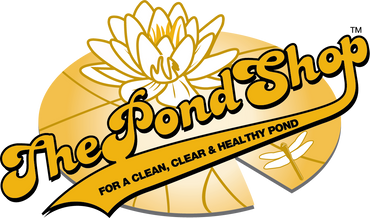Parrot Feather

Parrot feather is an invasive aquatic plant that it is now present in nearly every southern state. Its emergent leaves are whorled, stiff and usually have 20 or more linear divisions (10 leaflet pairs) on each leaf, they are feather-like and grayish green and can extend up to 12 inches long above the water surface. The submerged shoots (similar to those of Eurasian milfoil) are comprised of whorls of 4 or 5 filamentous leaves up to 1 inch long. Submersed leaves are reddish-orange. When submerged shoots reach the water surface, plant growth changes and begins to creep along the water surface with extensive branching and nodes followed by vertical growth of emergent stems. Flowers grow from the emergent shoots and are small and white. Parrot feather grows in shallow wetlands, slow-moving streams, irrigation reservoirs or canals, edges of lakes, ponds, sloughs, or backwaters. Although it can grow in moist soil and tolerates a wide range of water levels, parrot feather requires rooting in bottom sediments. So, habitats where light can penetrate to the bottom favor colonization. Parrot feather does not have tubers, turions or winter buds. Therefore, it uses its stolons (stems that grow at the soil surface or just below ground) for dispersal. Parrot feather prefers temperatures between 60 and 15 degrees F, but it can survive freezing temperatures if it is submerged. Parrot feather grows vigorously and quickly once is present in a new habitat, forming dense canopies that occupy large amounts of space and block sunlight and oxygen exchange. As a result, it outcompetes and replaces native flora that might be more valuable to fish and wildlife. Parrot feather infestations choke waterways, inhibit recreational activities, blocks drainage and boots mosquito larva growth.
Prevention
Parrot feather has been used for ornamental purposes for over a century, once it escaped cultivation it spread to different water bodies and regions through fragmentation and unintentional planting, readily taking root. Parrot feather is almost exclusively spread by humans, to avoid increasing its dispersion make sure all clothing, boats, trailers, and any related equipment are free of plant material prior to leaving. Clean, flush and dry water-crafts to rid them of any plant contaminants. Once this invasive plant becomes established is very difficult to control. Nutrient availability in the sediment will feed its growth.
Biological Control
Beneficial bacteria products and enzymes such as PZ900 feed on nutrients in the water making them unavailable for plant growth. Reducing nutrients can help prevent invasion.
Physical/Mechanical Control
Raking using a Lake Rake, cutting using an Aquatic Weed Eradicator (A.W.E.), pulling or harvesting offers temporary control, but it is very labor intensive as parrot feather’s dense mats are heavy and difficult to haul out of the water. Submersed and emergent shoots and Roots must be removed or re-growth will occur. Long term monitoring for any re-establishment to avoid future regrowth is crucial. Physical removal in conjunction with chemical control will maximize success.
Dyes and colorants reduce aquatic plant growth by limiting sunlight penetration and reducing photosynthesis. Pond dyes have been helpful in preventing parrot feather proliferation.
Aeration has also been used as a mechanical approach to hinder pondweed proliferation. Increased water flow can reduce plant density. Additionally, the added oxygen will accelerate the decomposition process of nutrients that pondweed needs to live.
Chemical Control
When used carefully according to the label instruction, aquatic herbicides can be safe and effective management tools. The products that have been successful in treating parrot feather individually or in combination are Reward and Weedtrine D, Aquathol K – liquid, Aquathol Super K – granular, Propeller, and Sonar AS and Sonar RTU. Parrot feather waxy cuticle on stems and leaves can only be penetrated with a wetting agent. Cygnet Plus is not only a wetting agent but also a sticker and penetrant. Cygnet Plus should be mixed in solution with herbicides when parrot feather plants are treated.
Reward is a fast-acting contact herbicide, highly effective in killing any part of the plant that comes into contact with.
Weedtrine D is a contact, non-volatile herbicide for use in controlling submersed and floating aquatics weeds. Weedtrine-D has rapid absorption and herbicide action.
Aquathol K (liquid) is a concentrated, highly soluble contact herbicide, effective against a broad range of aquatic plants.
Aquathol Super K (granular) this contact herbicide has been effective on pondweeds and can be mixed with copper compounds for additional efficiency.
Sonar A.S. is a long-acting systemic herbicide ideal for water bodies with minimal flow. Simply mix Sonar A.S. with water and spray throughout the surface of the water or pour in different spots around the pond. Sonar A.S. does not have water use restrictions.
Sonar RTU is a long-acting, systemic, easy to use herbicide. Sonar RTU does not require mixing, simply open the bottle and treat from the shoreline.
Propeller is a broad spectrum, fast acting contact algaecide/herbicide. It comes in a water dispersible granule that mixes with water to be sprayed or pour. Propeller should be applied to actively growing plants or algal blooms.
Cygnet Plus is a nonionic wetting agent, sticker, activator, and penetrant all in one. Cygnet Plus increases the effectiveness of herbicides uptake into the plant tissue.





